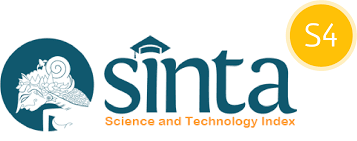Deteksi Spam Email dengan Metode Naive Bayes dan Particle Swarm Optimization (PSO)
DOI:
https://doi.org/10.29408/jit.v6i1.7049Keywords:
Email Spam, Algoritma naive bayes, Support Vector Machine, Random forest, Teks MiningAbstract
Internet-based technology has become a primary need. Based on the survey results from the Central Statistics Agency in collaboration with APJII, email sending and receiving activities have outperformed social media positions by reaching 95.75%. Very intense use of email can have both positive and negative effects. Because apart from being a communication tool, in reality not everyone uses email well and there are even so many misuses of email that have the potential to harm others. This misused email is commonly known as spam or junkmail (junk email) which contains advertisements, scams and even viruses. In this study, data processing from gmail emails with text mining was carried out and then tested with several data mining classification methods including the Naïve Bayes Algorithm, SVM, Random Forest and combined with Partical Swarm Optimization in predicting spam emails with the aim that the selected algorithm is the most accurate. From the test results by measuring the performance of the four algorithms using Confusion Matrix and ROC, it is known that the Naïve Bayes algorithm with Partical Swarm Optimization (PSO) has the highest accuracy value, namely 81.40% and AUC 0.78References
N. Q. Fitriyah, H. Oktavianto and H. , "Deteksi Spam Pada Email Berbasis Fitur Konten Menggunakan Naïve Bayes," JUSTINDO (Jurnal Sistem & Teknologi Informasi Indonesia), vol. 5, no. 1, pp. 1-7, 2020.
S. N. D. Pratiwi and B. S. S. Ulama, "Klasifikasi Email Spam dengan Menggunakan Metode Support Vector Machine dan k-Nearest Neighbor," JURNAL SAINS DAN SENI ITS, vol. 5, no. 2, pp. D-344 - D-349, 2016.
A. K. Sharma and S. Sahni , "A Comparative Study of Classification Algorithms for Spam Email Data Analysis," International Journal on Computer Science and Engineering (IJCSE), vol. 3, no. 5, pp. 1890 - 1895, 2011.
F. Rozi and R. Kartadie, "Deteksi E-Mail Dan Spam Menggunakan Fuzzy Association Rule Mining," JIPI (Jurnal Ilmiah Penelitian dan Pembelajaran Informatika), vol. 2, no. 2, pp. 94 - 98, 2017.
R. Y. Hayuningtyas, "Aplikasi Filtering of Spam Email Menggunakan Naïve Bayes," IJCIT (Indonesian Journal on Computer and Information Technology) , vol. 2, no. 1, pp. 53 - 60, 2017.
P. Sucháneka, F. Mareckib and R. Buckic, "Self-learning bayesian networks in diagnosis," Procedia Computer Science 35, p. 1426 – 1435 , 2014.
H. Annur, "Klasifikasi Masyarakat Miskin Menggunakan Metode Naïve Bayes," ILKOM Jurnal Ilmiah , vol. 10, no. 2, pp. 160 -165 , 2018.
A. Wibisono , S. D. Rizkiono and A. Wanto, "Filtering Spam Email Menggunakan Metode Naive Bayes," TELEFORTECH : Journal of Telematics and Information Technology, vol. 1, no. 1, pp. 9 - 17, 2020.
E. N. Putra, "Pengiriman E-Mail Spam Sebagai Kejahatan Cyber Di Indonesia," Jurnal Cakrawala Hukum, vol. 7, no. 2, pp. 169 - 182, 2016.
Y. K. Putra and M. Sadali, "Perbandingan Algoritma Naive Bayes dan Naive Bayes Berbasis PSO untuk Analisis Kredit pada PT. BPR Syariah Paokmotong," Infotek : Jurnal Informatika dan Teknologi, vol. 2, no. 2, pp. 61 - 69, 2019.
F. Mu’Alim and R. Hidaya, "mplementasi Metode Random Forest Untuk Penjurusan Siswa Di Madrasah Aliyah Negeri Sintang," Jurnal JUPITER, vol. 14, no. 1, pp. 116 - 125, 2022.
D. Andrian, M. Fachrurrozi and N. Yusliani, "Deteksi Spam Email Menggunakan Bayesian Network," ANNUAL RESEARCH SEMINAR 2016 , vol. 2, no. 1, p. 209 – 211 , 2016.
A. Mawarsih, "Pengaruh Electronic Mail Sebagai Media Komunikasi Terkadap Mengerjakan Tugas Kuliah Mahasiswa," Ejournal Ilmu Komunikasi, vol. 2, no. 1, pp. 334 - 348 , 2014.
F. Fathonah and A. Herliana, "Penerapan Text Mining Analisis Sentimen Mengenai Vaksin Covid – 19 Menggunakan Metode Naïve," Jurnal Sains dan Informatika, vol. 7, no. 2, p. 155 – 164 , 2021.
E. D. Sikumbang, "Penerapan Data Mining Penjualan Sepatu Menggunakan Metode Algoritma Apriori," Jurnal Teknik Komputer , vol. 4, no. 1, p. 156 – 161 , 2018.
I. Fathurrahman and F. , "Klasifikasi Penentuan Penerima Program Keluarga Harapan (PKH) Menggunakan Algoritma Support Vector Machine (Svm) Pada Kantor Dinas Sosial Lombok Timur," Infotek : Jurnal Informatika dan Teknologi, vol. 3, no. 1, pp. 27 - 31, 2020.
Downloads
Published
How to Cite
Issue
Section
License
Semua tulisan pada jurnal ini menjadi tanggung jawab penuh penulis. Jurnal Infotek memberikan akses terbuka terhadap siapapun agar informasi dan temuan pada artikel tersebut bermanfaat bagi semua orang. Jurnal Infotek ini dapat diakses dan diunduh secara gratis, tanpa dipungut biaya sesuai dengan lisense creative commons yang digunakan.
Jurnal Infotek is licensed under a Creative Commons Attribution 4.0 International License.
Statistik Pengunjung




